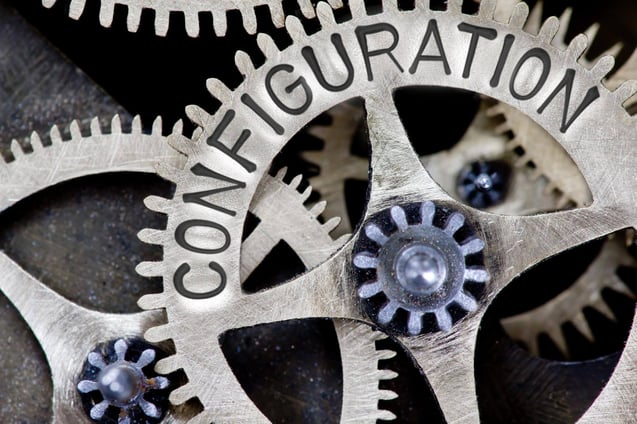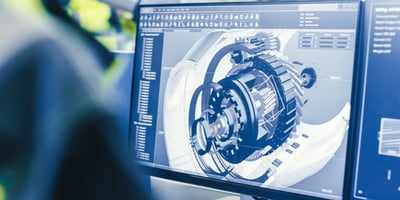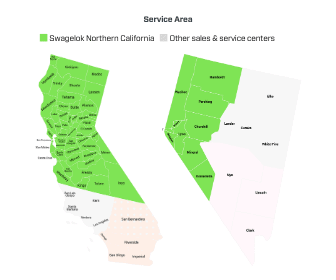Understanding Your API Seal Configuration Options in Northern California Petrochem Plants
by Paul Lesnau, on 6/25/20 8:45 AM

API 682 is the ‘go-to’ standard that most Northern California petrochem refineries either use or have based their internal standards on. It contains a wealth of information and an incredible—sometimes bewildering—array of seal system choices to cover every need in the plant. And you already know what a wide variety of equipment and processes your facility has!
With so much information and so many choices, how do you know which API seal configuration to choose when upgrading or replacing a mechanical seal system? There’s one thing for certain: the potential for leakage should be top of your mind.
With the goal of preventing leaks at the forefront, let me walk you through the different seal arrangements available and some key seal support system considerations. I’ll also tell you how to make the whole decision much simpler.
API Mechanical Seal Configuration Selection
Leaks in the refinery are always a safety hazard that you need to take very seriously. Toxic fumes, flammable vapors, or spills can all trigger significant consequences—especially with the potential for Bay Area Air Quality Management (BAAQMD) and California Division of Occupational Safety and Health (Cal/ OSHA) sanctions.
But it is not just pricey fines that you have to worry about. It’s the potential cost of downtime. Even more, a single reportable event can damage the refinery’s reputation, making community relations that much more challenging.
That’s why you are probably dealing with a dual mechanical system. So, let’s focus on the most common dual seal configurations and how they stack up for different processing needs and leak prevention.
Face to back or (tandem)
This configuration provides excellent backup if one seal should fail, so it is often used when no leakage can be tolerated at all. Since they are capable of operating at higher buffer fluid pressures, these seals can also be a solid choice for contaminated or dirty services by keeping the process fluid out of the seal. Especially for dirty services, adding a good flushing system and a seal support system that can handle the contaminants is key to seal reliability.
- Challenges: Some face to back seal arrangements have less space so getting enough flow to cool the inner mechanical seal ring can be challenging. For Bay Area petrochem plants that have been retrofitted, it’s a good idea to consult with a seal support system expert.
Back to back
Here’s your seal arrangement of choice for higher pressure services such as the feed pumps for the Ultra Low Sulfer Diesel (ULSD) treating units that many Bay Area refineries installed. Back to back seals often work with process fluid on the inner seal and a buffer fluid on the outer seal. You might select one of the many chartridge format seals available since they are faster and easier to change.
- Challenges: It is important that the barrier fluid has sufficient pressure to maintain a good seal and provide sufficient flow. A solid seal support system vendor can help you determine a solution.
Face to face
These seal arrangements are popular for retrofitted plants because they typically can fit in smaller spaces, like you find in the space-constrained older units of many Bay Area refineries. They can also be configured with either barrier fluid (a pressurized system) or buffer fluids (unpressurized system) which will be different API seal support arrangements.
- Challenges: If you are faced with space issues or are dealing with external pumps, you may need a customized seal support system. Does your current vendor offer that service? If not, you may need to reach out to a new seal support system vendor with custom design capabilities.
Concentric seals
This is the newest API seal configuration addition to API 682 that can be selected for no leakage of the product into the barrier fluid or no leakage of barrier fluids INTO the product.
- Challenges: Concentric seals typically require a larger radial area to install and are still somewhat unfamiliar to many facilities. A good seal support vendor that understands this newest development can help you transition to concentric seals when you need their improved performance options. It’s even better if they offer aftermarket support and training to help get your operators up to speed.
| Configuration | Use | Options | Challenges |
| Face to Back (Tandem) |
Low/ no failure toleration Dirty/ contaminated services |
Flushing and seal support systems for contaminants | Cooling the inner mechanical seal ring |
| Back to Back | Higher pressure services | Properly pressurized seal system via external pump (if required) | Maintaining sufficient buffer fluid flow |
| Face to Face | Space constrained | Either buffer or barrier fluids can potentially be used | Outboard seal does not provide a full pressure back up if inner seal fails |
| Concentric Seals | No leakage can be tolerated | The seal support system must handle two seals in series | May be less familiar to many facilities |
Once you have determined which API seal configuration is correct for the service and processing conditions, you’ll need to then select a seal support system to ensure leak-tight performance. There are numerous seal support systems available for each API seal configuration. The choice can feel extra complicated when you are just getting your footing with the mechanical seal options. But you don’t have to face the decisions alone. There’s help available.
API Seal Configuration Options Made Easier
A solid seal support vendor is an important part of your maintenance and reliability teams. They can inspect the API seal configuration and help you get the right seal support system to keep the pumps running for a long time with the lowest possible lifecycle costs—regardless of the API seal configuration you select. It is a best practice to involve them as early as practical to get your pumps performing as needed.
Swagelok has an experienced team of local seal system engineers that can help you understand your mechanical seal soptions and the best seal support systems to keep them operating at optimal performance. Once you’ve determined what you need, we can also fabricate and provide field support for any of your seal support system needs, not just for double seal arrangements.
If your system requires a custom fabrication, we are confident that we are your best option for a high-quality system delivered in the timeframe you need. We are local—we understand what Bay Area refineries require and we can see you through the project with on-site guidance as needed.
Swagelok Northern California, can help you understand your best seal support system options for any of the API configurations you need. Contact our team today by calling 510-933-6200.
 About Paul Lesnau | Sales Manager, Business Development Manager, and Field Engineer
About Paul Lesnau | Sales Manager, Business Development Manager, and Field Engineer
Paul holds a B.S. in Mechanical Engineering from North Dakota State University. Before joining Swagelok Northern California, he was the West Coast Regional Sales Manager for an organization based in Illinois involved in pneumatic and hydraulic applications where he supervised product distribution throughout the western United States, Canada, and Mexico. While in this role, he was able to help provide technical and application-specific expertise to customers and distribution to drive specifications.



/Digital%20montage%20(1).jpg?width=1920&name=Digital%20montage%20(1).jpg)

